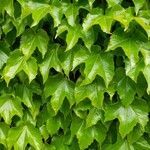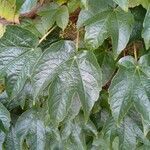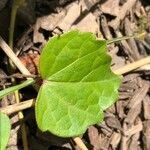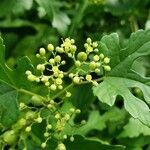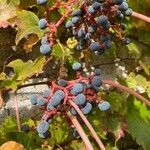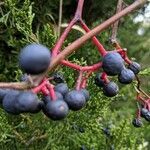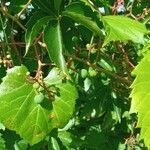Lianas, high climbing. Tendrils 5–10-branched, with adhesive discs. Leaves usually simple, sometimes palmately compound on older plants; petiole usually longer than, sometimes ± equaling, blade; blade lustrous adaxially, ovate to cordate-ovate or cordate-orbiculate, 4.5–17 × 4–16 cm, 3-lobed or leaflets 3, thin, herbaceous, base truncate to slightly cordate, margins crenate to crenate-serrate, apex acute to short-acuminate, surfaces glabrous or abaxial veins puberulent. Inflorescences ± divergently branching, without distinct central axis. Flowers yellowish green. Berries globose, 5–8 mm diam. 2n = 40.
A deciduous shrub. It is creeping and twines on rocks and fences. The tendrils have disks on them that attach to walls. Plants grow 20 m high. The leaves are of 2 types. The leaves on the stem are large and have 3 lobes. The edges have small teeth. The leaves are 5-15 cm wide. They are broadly oval with a heart shaped base. The leaf stalk is 15 cm long. The leaves on the non flowering stems are smaller and have 3 leaflets. The flowers are small and green-yellow. They are in groups 3-6 cm long. The fruit are like small grapes. They are round and dark purple. They are 4-5 mm across.
High-climbing and freely branched; tendrils with preformed adhesive disks; lvs mostly or all cordate and 3-lobed, but often a few of them trifoliolate. Native of China and Japan, locally escaped from cult. here and there in our range.
